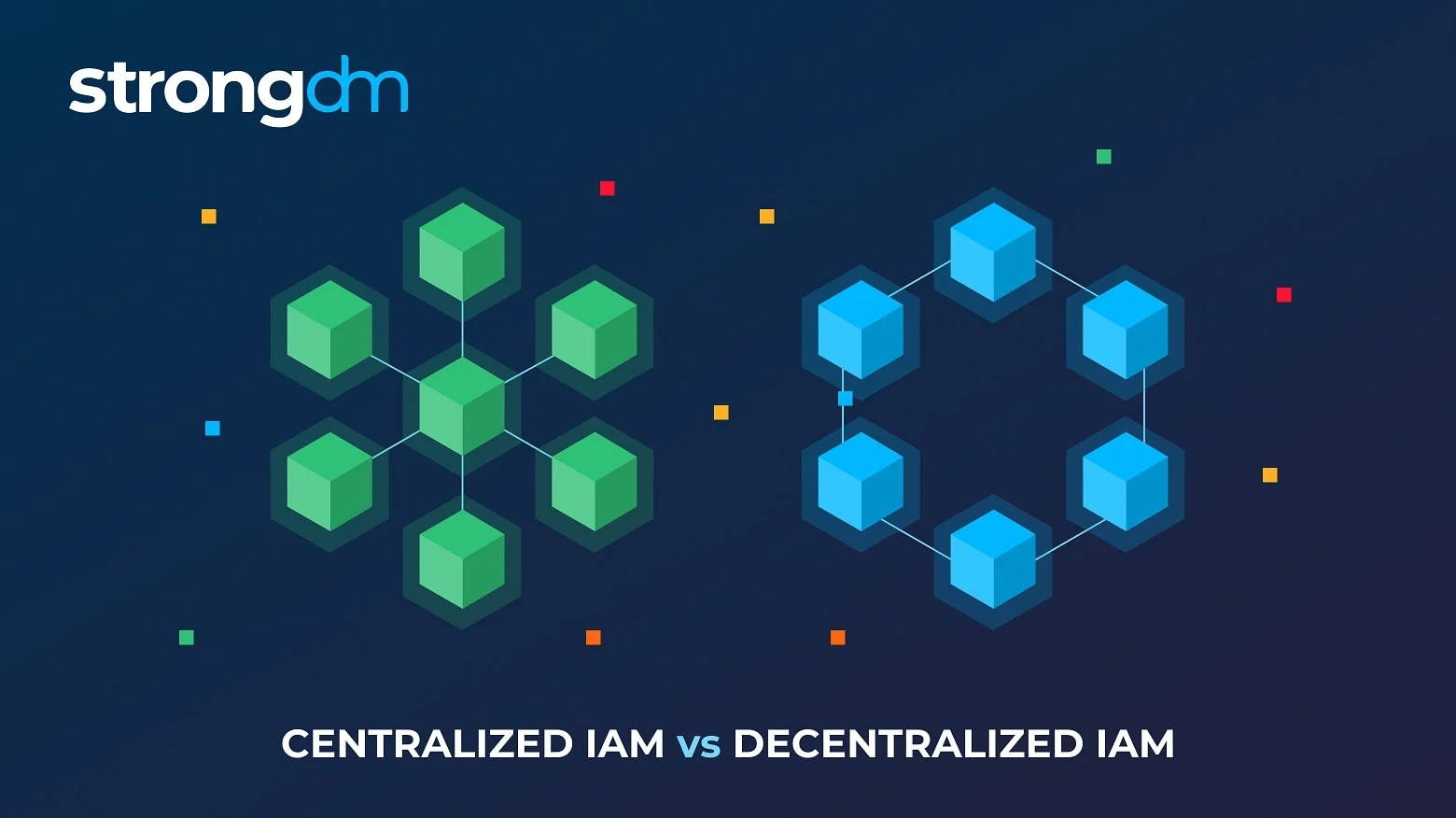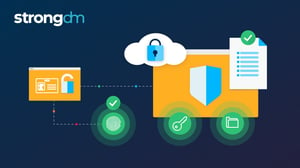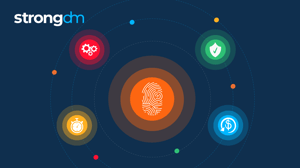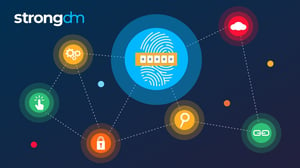Centralized and Decentralized Identity Management Explained


Written by
Schuyler BrownLast updated on:
October 17, 2025Reading time:
Contents
Built for Security. Loved by Devs.
- Free Trial — No Credit Card Needed
- Full Access to All Features
- Trusted by the Fortune 100, early startups, and everyone in between
Summary: In this article, we’ll define centralized identity management and explain the difference between centralized and decentralized identity management models. We’ll explore what centralized access control is, how it works, and how centralized access management handles provisioning, authentication, and authorization. By the end of the article, you’ll know how to choose between centralized account management and decentralized models to prevent cybercrime and streamline provisioning workflows.
What Is Centralized Identity Management?
Centralized identity and access management (IAM) is a framework for storing and managing users’ identity data in a single location. It provides a secure process for identifying, authenticating, and authorizing users who have permission to access a company’s digital assets.
With centralized IAM, users can access all the resources and applications they need to do their jobs by entering only one set of login credentials. Eliminating the need to remember and maintain separate login IDs and passwords for each resource improves the user experience and reduces the risk of cyberattacks. The recent Uber security breach underscores the need for stronger security measures like centralized IAM to prevent hackers from using stolen credentials to gain access to corporate resources and sensitive data.
Centralizing access controls also mitigates the risk of threats by giving IT teams greater visibility into user behavior and system resources. Employee onboarding and offboarding can be automated, making it easy to grant and revoke access.
🕵 Learn how Fair.com simplified onboarding & offboarding process with StrongDM.
Benefits of centralized identity management
Centralized identity management consolidates the storage and exchange of users’ login credentials and privileges. Other benefits include
- A seamless user experience: Using one set of credentials results in less friction, eliminates the need to remember multiple login/password combinations, and minimizes password resets.
- Consistency: Store data consistently and with fewer errors across all platforms. Log and audit access and user activity automatically.
- Automated provisioning and deprovisioning: Provision new users quickly with fewer manual errors. Deprovisioning removes a user from all platforms simultaneously, eliminating zombie accounts and preventing threats from bad actors.
- Streamlined threat mitigation: With better visibility, breaches are easier to detect and isolate.
Challenges of centralized identity management
While centralized IAM strengthens security by providing tighter controls that help prevent unauthorized access, it’s not a perfect strategy.
Critics of a centralized approach often cite the single identity store as the most troubling issue. Relying on a single set of credentials creates a single point of failure. A cybercriminal who successfully hacks a user’s account could gain access to all the resources that user is authorized to access. While this flaw is concerning, organizations can mitigate risk by implementing strong authentication protocols, such as multi-factor authentication (MFA) or biometrics.
How does centralized identity management work?
The identity component of centralized IAM consolidates the storage and management of identity data, including each user’s login credentials, roles, and permissions. Storing this information in a central repository simplifies provisioning and deprovisioning and gives IT teams the ability to observe users’ login activity for all resources, regardless of location. With greater visibility, teams can detect threats faster and prevent them from spreading.
The access management component controls the authentication processes used to verify a user’s identity—for example, single sign-on (SSO) or MFA. It also controls the authorization processes that determine whether a user has permission to access a resource.
Centralized identity management examples
When a new employee joins the organization, the IT team gets them set up to access all the resources they need from the dashboard on their desktop using only one set of login credentials. Automatic provisioning grants access to applications, tools, and services based on the employee’s role. The IT team can also give the new user individual permissions or assign the user to categories, such as roles or groups, that carry predefined permissions.
When the employee is promoted later, the IT team will need to update the employee’s group, role, and individual permissions only once, and they’ll enjoy access to all the applications they need for their new role.
Centralized vs. Decentralized Identity Management: What's the Difference?
With centralized IAM, users can access all the resources they need with just one set of login credentials. A centralized repository stores users’ credentials for authentication and authorizes users to access multiple applications. Users must trust the repository to protect sensitive data.
With decentralized authentication, also known as distributed identity management, users access applications individually using a different set of credentials for each. This model distributes users’ identities across the network, as each application must store and handle its own user data. Decentralized identity management gives users more control but offers companies less visibility.
Centralized or Decentralized: Which One Is Better?
Both have advantages and disadvantages. Centralized identity management allows for less user friction and gives organizations more administrative control. However, a poorly implemented centralized IAM solution introduces a single point of failure.
Decentralized identity management eliminates this single point of failure by distributing data and increasing trust. Decentralized IAM relies on nascent Web3 technologies—specifically blockchain and user-owned, decentralized identifiers (DID). DIDs allow users to control their data and offer a convenient way to authenticate with a wide range of applications, while blockchain’s decentralized ledger provides secure cryptographic storage.
Because there’s no need for consensus across a large network, decentralized solutions are typically less expensive.Despite this advantage, decentralized technologies cannot match the granular administrative control that centralized IAM offers to organizations. Companies that choose a decentralized approach will also sacrifice visibility. Without a clear view of user behavior and system resources, the risk of a breach increases because threats are more challenging to detect.
Leverage Centralized Identity Management with StrongDM
StrongDM centralizes identity management to provide greater security. It helps employees be more productive by giving them timely access to what they need. Team admins can consolidate, manage, and streamline authentication for mission-critical services, including cloud accounts, databases, and Kubernetes.
With StrongDM, companies get visibility into their entire ecosystem from a single space, making it easier to manage user access for better compliance.
Get Smarter Identity Management with StrongDM
As tech stacks expand, teams need modern tools to rein in the overflow. See for yourself how StrongDM can centralize your IAM and make provisioning practical and individualized, all while keeping company data safe. Sign up for a free, 14-day trial today.
Next Steps
StrongDM unifies access management across databases, servers, clusters, and more—for IT, security, and DevOps teams.
- Learn how StrongDM works
- Book a personalized demo
- Start your free StrongDM trial

Categories:

About the Author
Schuyler Brown, Chairman of the Board, began working with startups as one of the first employees at Cross Commerce Media. Since then, he has worked at the venture capital firms DFJ Gotham and High Peaks Venture Partners. He is also the host of Founders@Fail and author of Inc.com's "Failing Forward" column, where he interviews veteran entrepreneurs about the bumps, bruises, and reality of life in the startup trenches. His leadership philosophy: be humble enough to realize you don’t know everything and curious enough to want to learn more. He holds a B.A. and M.B.A. from Columbia University. To contact Schuyler, visit him on LinkedIn.
You May Also Like




